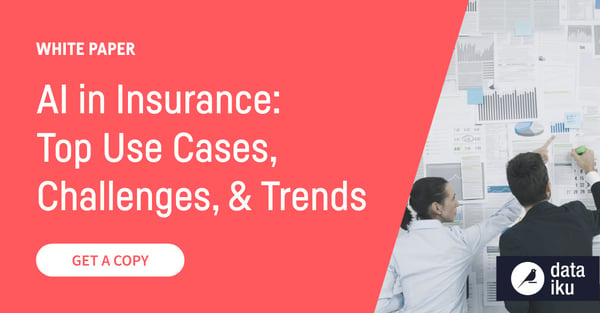In its 2019 CIO Agenda: Insurance Industry Insights, Gartner cited increased interest in the industry to move toward data science and machine learning use cases. Now more than ever in today’s landscape, this shift is critical; but the change does not come without challenges.
Finding and Hiring Data Talent
Hiring people with skills in machine learning is extremely difficult across industries due to a shortage of talent and skyrocketing demand. But the insurance industry is better positioned than most to overcome this challenge via upskilling.
With tens (possibly hundreds) of statistics-minded actuaries already on staff, providing the right tools to nudge them into the world of data science is a small step. Upskilling business staff is also a great way to fill talent gaps, and in many ways, it’s necessary for insurance businesses that want to democratize data science.
Ultimately, it’s much more difficult to teach a pure data science talent the ins-and-outs of the business than to teach someone who knows the business like the back of their hand some basic skills for using data in their day-to-day work.
Legacy Tools
While insurance is undoubtedly more advanced when it comes to technology than some of the financial services players on the banking side (just look at cloud adoption), there is still a lingering issue of legacy tools and systems. It becomes infinitely more difficult to upskill staff per the previous section if data tools are difficult to use, aimed exclusively at the coder population, or even if the user experience is constantly changing with each new technology that gets introduced.
Data science, machine learning and AI platforms like Dataiku can help resolve this challenge by being a unified visual abstraction layer for data projects, providing robust features no matter who the audience (coder or non-coder) and a consistent experience no matter what the underlying changes in technology.

Breaking Down Silos
Today’s enterprises tend to be siloed in many ways — from individuals to entire teams and potentially also data, it’s difficult to get everything (and everyone) working together across these lines. Again, tools can help when it comes to breaking down the silos of data. But when it comes to people, the answer is collaboration. Insurance organizations should be looking for ways that actuaries can work with data scientists and also with excerpts from the business side to come up with the best possible solutions to high-value use cases.





